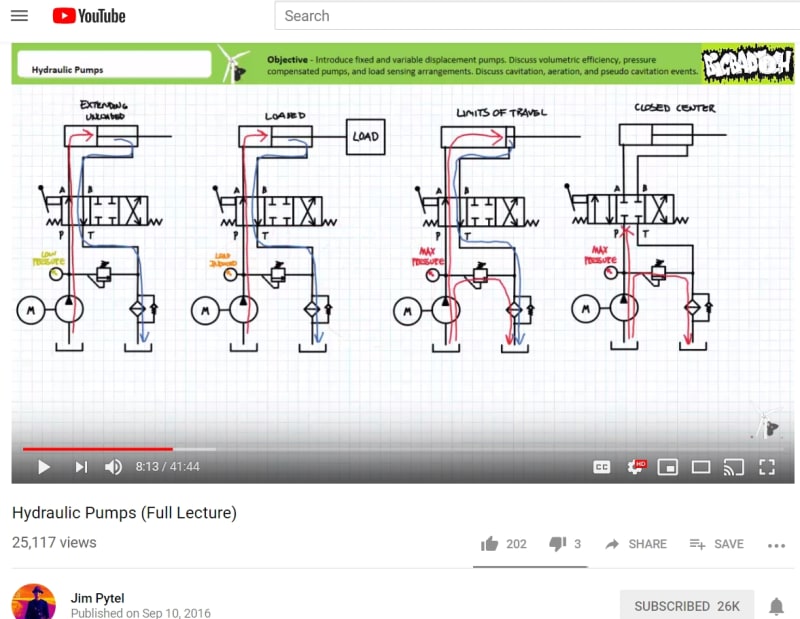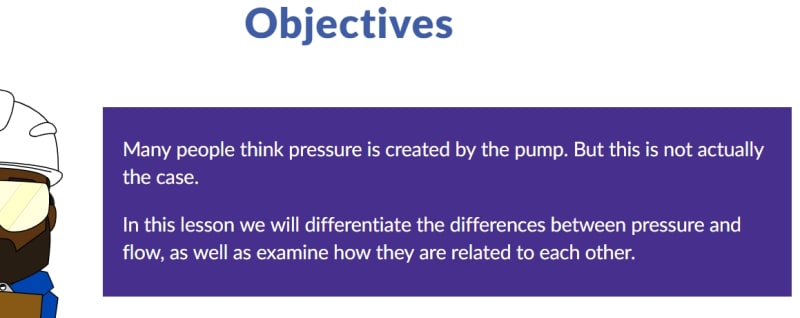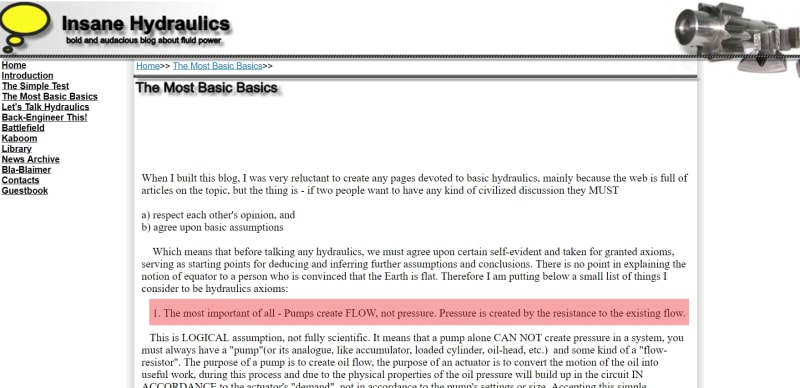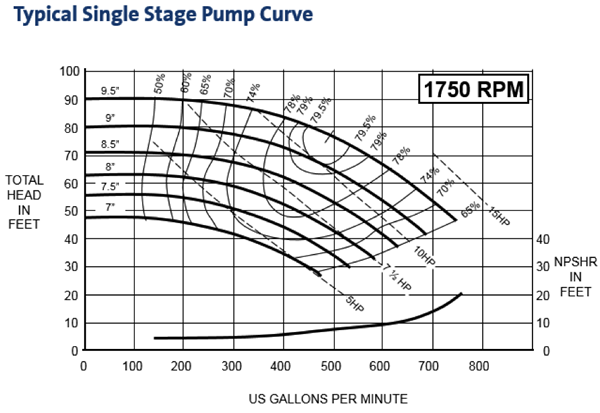I wasn't around here then but yes, it is amazing.
I don't think this forum was around then. I was referring to the NFPS.org and ifps.org then the Hydraulics and pneumatics forums. LinkIn also had a hydraulic forum where people that were supposedly looking for jobs or trying to impress people, would embarrass themselves. These forums are gone now along with the all the good, the bad and the ugly. I hated that so much effort and knowledge was gone but it was difficult for the new guys to tell which is which because of all the 'noise'
Not to mention all the other myths, fallacies and inexactitudes put about by our industry's educators.
This is a shame. What hydraulics is often taught at a 'dumbed down' level that perpetuates these myths. When I see the equation V=Q/A my integrator winds up into saturation. (IRStuff will get it).
It's not only Sir Isaac who must be turning in his grave !
I am doing my best to calm him down but along the way I have made lots of enemies.
Now I have a pulpit from which to write. Maybe I can do more. I could make this a topic in H&P but it would be short.
People only look at the output but not what is actually happening in the pump. I would explain that a hydraulic pump simply converts energy from electric to hydraulic energy. The energy can be in the form of kinetic energy ( moving ) and potential energy ( pressure). The pump must to do work on the oil. Work is the integral of force over distance. The distance is the length of stroke of a pump cylinder. The force can be thought of as F=P*A. Inside the pump the equation Power = mass*velocity*acceleration assuming the oil is exhausting into free space In free air the pump no longer exerts a force on the oil after the pump piston has reached the end of stroke. Therefore it is no longer accelerating except from gravity. When flow is restricted a there is still the pressure caused by accelerating the oil but also pressure to overcome the any opposing pressure. The pump is still accelerating a mass to add to the kinetic energy put the force available for accelerating the mass is reduced by the opposing force or pressure at the outlet of the pump. When the forces are equal there is no flow but pressure like IRStuff mentioned. This is very inefficient. The energy must go somewhere if the pump doesn't stall, there must be some place for the oil to leak within the pump or the pump has a swash plate in the near neutral position providing just enough flow to to cover the leakage.
In short, the pump needs to exert a force on the oil to move it out of the pump. Any force that exceeds the opposing force will be used to accelerate the oil so it an move out of the pump. If the oil doesn't move fast enough the oil pressure will increase which is a form of potential energy.
To really understand you need to look at this as if you are modeling a system and must know all the equations.
A good example is the 'flow makes it go' equation V=Q/A. This equation is wrong because it would compute that a rodded cylinder will retract faster than extent. This is not so. The V=Q/A doesn't explain how the cylinder accelerates. If you look at a simulation you will find that force makes the piston go. Flow only equalized energy by flowing from a higher energy ( pressure ) to a lower energy. TIn the case of a hydraulic cylinder, the flow occurs only because there is motion. I think Akkamaan put this in his signature on the H&P forum.
BTW, I still have some of the old Excel spread sheets from those discussions. Not everything was lost.
Peter Nachtwey
Delta Computer Systems
![[ponder] [ponder] [ponder]](/data/assets/smilies/ponder.gif)
![[bigglasses] [bigglasses] [bigglasses]](/data/assets/smilies/bigglasses.gif)



![[ponder] [ponder] [ponder]](/data/assets/smilies/ponder.gif)
![[bigglasses] [bigglasses] [bigglasses]](/data/assets/smilies/bigglasses.gif)




